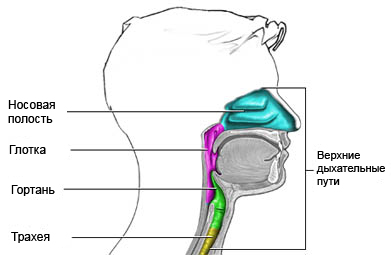Viral upper respiratory tract infection (cold and flu) – description
Viral upper respiratory tract infection – acute respiratory infections (ARI) There are varying degrees of severity and cause symptoms in the ears, maxillary sinuses, throat, and nose. The most common two kinds of respiratory tract infections – cold and flu.

The rapid spread of colds contributes to their method of entry into the body – via the respiratory tract and mucous membranes.
Influenza spreads around the world in the annual winter epidemics of variable. Large epidemics occur every 10-15 years and may lead to death rather large number of people. Most of the deaths occur in the elderly and debilitated by chronic diseases (heart disease and respiratory disease) people.
Cold
For the common cold is characterized by nasal congestion, cold, sneezing, and sometimes a sore throat, headache and malaise (bad feeling). Rare Fever. Symptoms are themselves normally within 1-2 weeks.
There are at least 200 known rhinoviruses, responsible for the symptoms of the common cold. Some of these can affect the lower respiratory tract and cause serious disease. Other viruses, such as respiratory syncytial virus can cause severe pneumonia in young children.
Flu
Influenza is a very specific disease, caused by influenza viruses. It has a typical seasonal cycle, peaks are observed in winter. It also has the typical symptoms, though they sometimes vary greatly in severity. The flu can be similar to the common cold, but as a rule, It causes the heat (38,5-39,4° C), significant malaise, dry cough, and runny nose, Headache, muscle aches and sore throat.
Influenza viruses are divided into three groups: A, B, FROM. Influenza A is the cause of the most severe epidemics, as often mutates, and develop immunity before human can not recognize a new species.
International organizations, such as the World Health Organization (WHO) constantly looking for new options worldwide influenza viruses. Each year, they try to identify the strains, that cause epidemics and make recommendations for developing vaccines against them.
